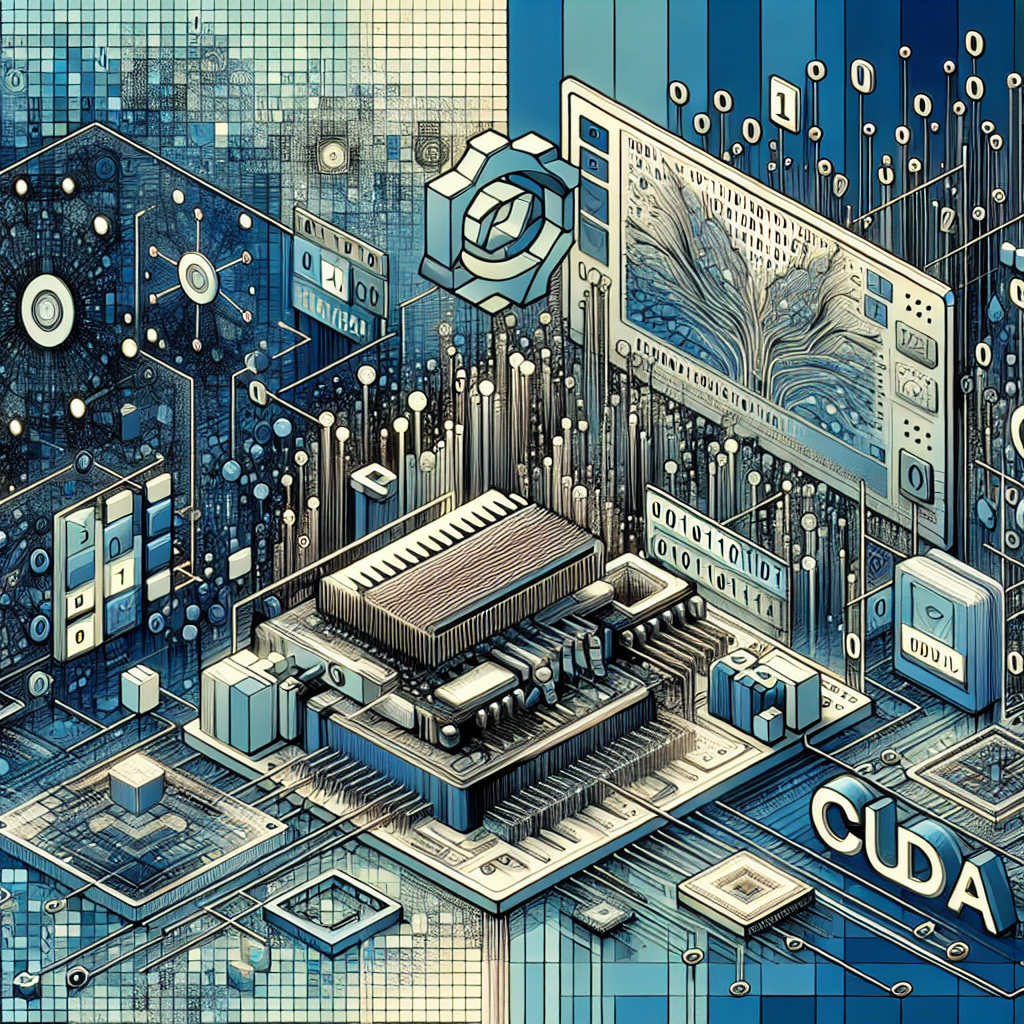Your cart is currently empty!
Understanding the Basics of CUDA Architecture and Programming

CUDA (Compute Unified Device Architecture) is a parallel computing platform and application programming interface (API) model created by NVIDIA. It allows developers to harness the power of NVIDIA GPUs for general-purpose computing tasks, enabling them to accelerate their applications by leveraging the massive parallel processing capabilities of modern GPUs.
Understanding the basics of CUDA architecture and programming is essential for developers looking to take advantage of the performance benefits that GPU computing can offer. In this article, we will provide an overview of the key concepts and components of CUDA, and explain how to get started with programming for NVIDIA GPUs.
CUDA Architecture
At the heart of CUDA is the CUDA architecture, which consists of three key components: the CUDA programming model, the CUDA software environment, and the CUDA hardware architecture.
The CUDA programming model allows developers to write parallel programs that can be executed on NVIDIA GPUs. It is based on the idea of dividing a computational task into smaller, independent sub-tasks that can be executed in parallel on the GPU cores. This allows for massive parallelism, which can result in significant performance improvements over traditional sequential programming models.
The CUDA software environment includes the CUDA Toolkit, which provides a set of libraries, tools, and compiler support for developing CUDA applications. It also includes the CUDA runtime, which manages the execution of CUDA programs on the GPU, and the CUDA driver, which interfaces with the GPU hardware.
The CUDA hardware architecture is the physical design of NVIDIA GPUs that enables them to perform parallel computations efficiently. This architecture includes multiple streaming multiprocessors (SMs) that contain a number of CUDA cores, as well as a global memory system that allows for fast data transfer between the GPU and the CPU.
Programming with CUDA
To program with CUDA, developers write code in the CUDA programming language, which is an extension of the C programming language. CUDA programs consist of two types of code: host code, which runs on the CPU, and device code, which runs on the GPU.
The host code is responsible for managing the execution of the CUDA program, including transferring data between the CPU and GPU, launching kernels (parallel functions) on the GPU, and synchronizing the execution of different GPU threads. The device code, on the other hand, is the code that is executed in parallel on the GPU cores.
To write device code, developers use CUDA kernel functions, which are special functions that are executed in parallel by multiple GPU threads. These kernel functions are written using CUDA C or CUDA C++, and can be launched on the GPU using the <<<...>>> syntax in the host code.
Developers can also use CUDA libraries, such as cuBLAS for linear algebra operations, cuFFT for fast Fourier transforms, and cuDNN for deep learning, to accelerate their applications without having to write low-level CUDA code.
Getting Started with CUDA Programming
To get started with CUDA programming, developers need to install the CUDA Toolkit on their development machine. The CUDA Toolkit is available for Windows, Linux, and macOS, and includes everything needed to develop and run CUDA applications.
Developers can then write and compile CUDA programs using a compatible compiler, such as nvcc, which is provided as part of the CUDA Toolkit. They can also use tools such as the NVIDIA Visual Profiler to analyze the performance of their CUDA applications and identify opportunities for optimization.
Overall, understanding the basics of CUDA architecture and programming is essential for developers looking to leverage the power of NVIDIA GPUs for parallel computing tasks. By mastering the CUDA programming model, software environment, and hardware architecture, developers can accelerate their applications and unlock new levels of performance and scalability.

Leave a Reply